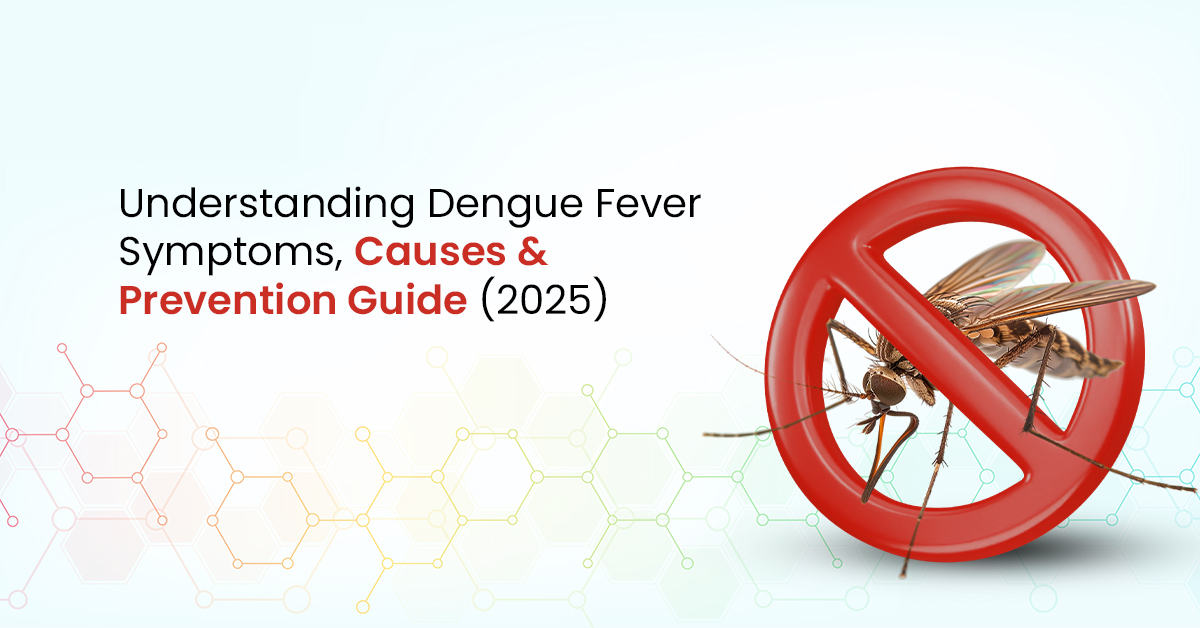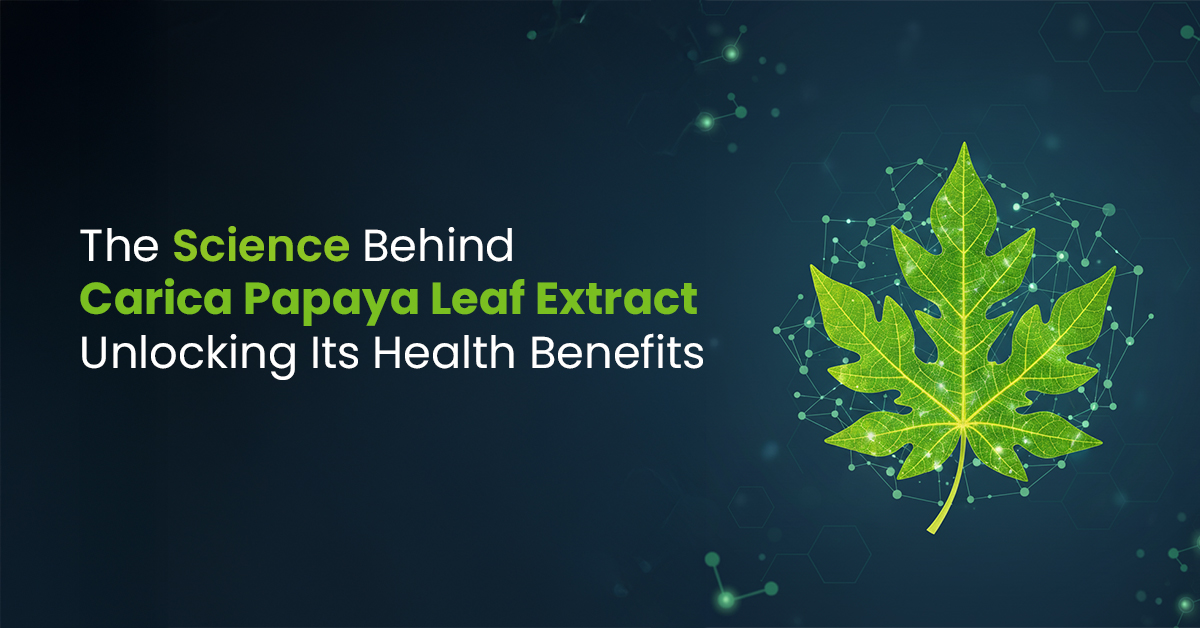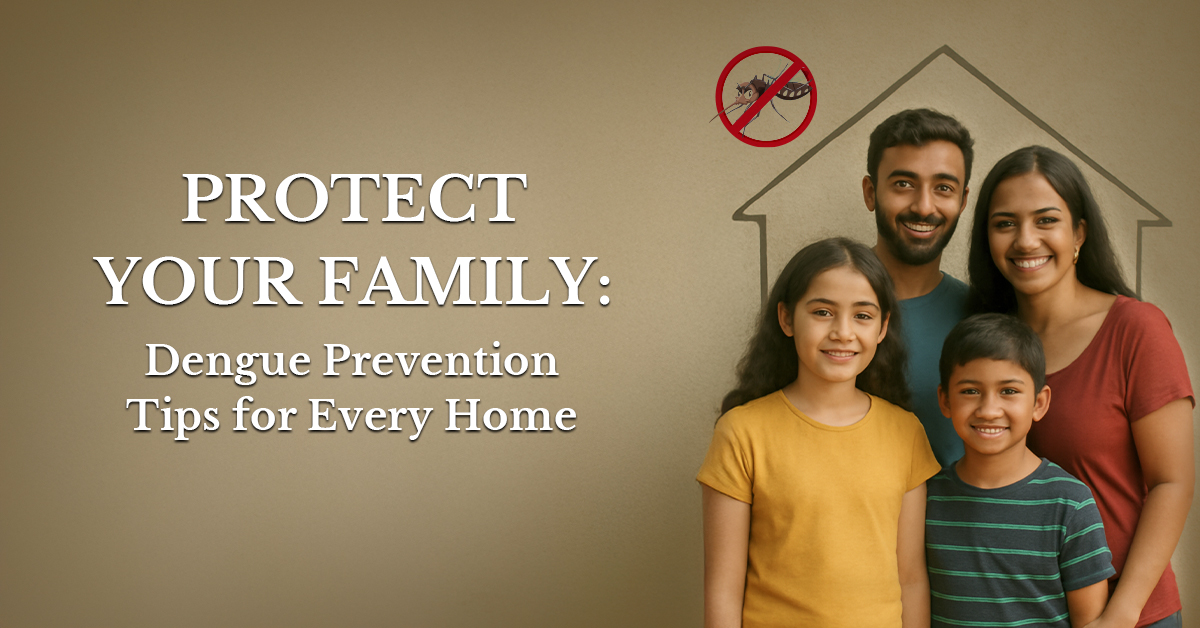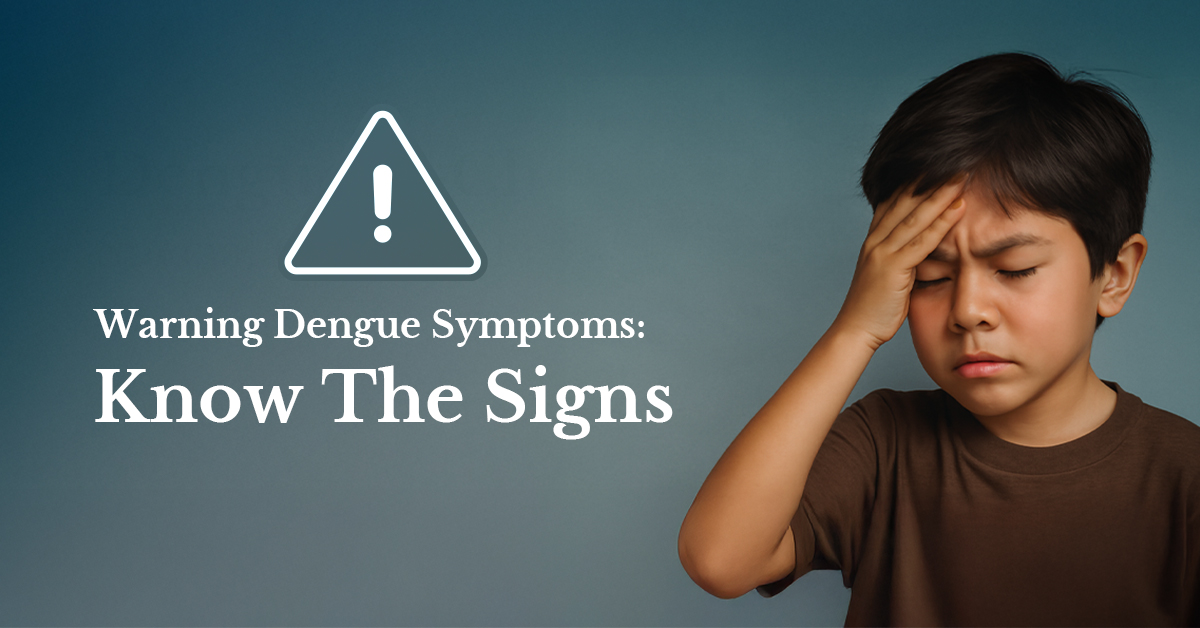Table of Contents

Jul 01, 2025
Dengue in Children: Special Care and Precautions
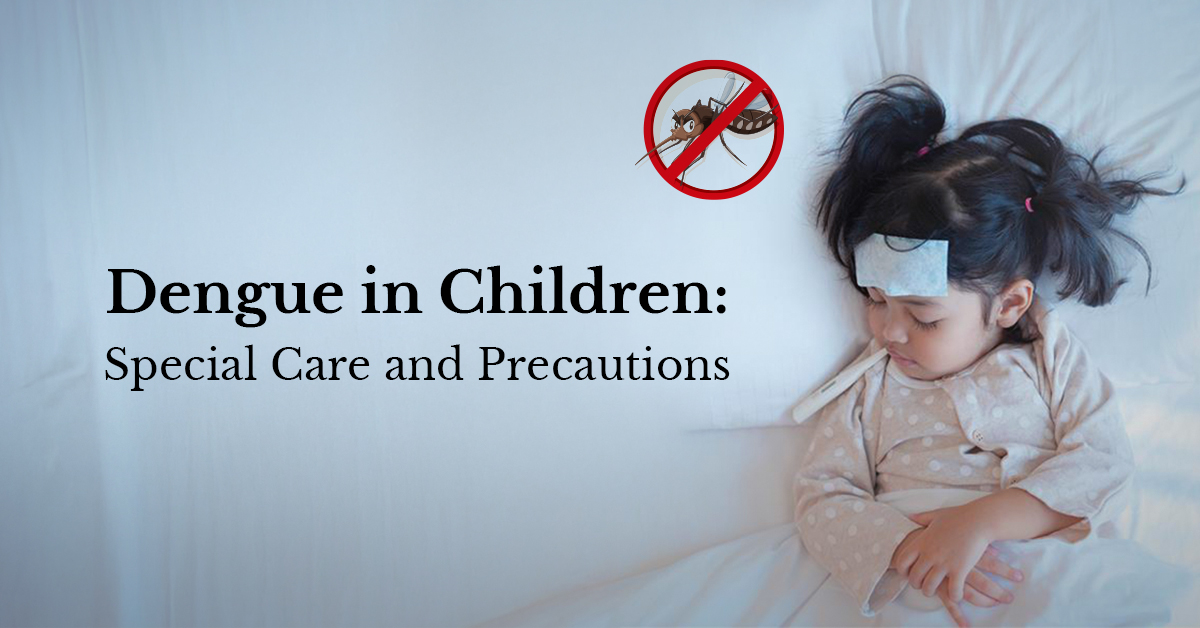
Introduction
Dengue fever is a significant public health concern, particularly in tropical and subtropical regions. Children, with their developing immune systems and high activity levels, are especially vulnerable to dengue infections. The disease, transmitted by Aedes mosquitoes, can range from mild to severe and, in some cases, lead to life-threatening complications like Dengue Hemorrhagic Fever (DHF) and Dengue Shock Syndrome (DSS). This blog focuses on how dengue affects children, the symptoms to watch for, and how parents can take extra precautions to protect their kids from this potentially severe illness.
How Dengue Affects Children
Children are often more susceptible to dengue compared to adults for several reasons. Their immune systems may not be fully developed, and they may not be as cautious when it comes to avoiding mosquito bites. Dengue fever in children can present differently than in adults, sometimes making it harder to diagnose early. Moreover, children with dengue may not always express their discomfort clearly, leading to delayed treatment.
Dengue can cause serious complications in children, including:
- Severe dehydration due to high fever and vomiting.
- Rapid decline in platelet counts, leading to an increased risk of internal bleeding.
- Liver enlargement, which can be painful and cause further complications.
- Shock syndrome, which occurs when the blood vessels leak, causing a dangerous drop in blood pressure.
Because children may be less likely to recognize or report their symptoms, it's crucial for parents to stay vigilant during dengue season and seek medical care promptly if their child shows signs of the disease.
Symptoms of Dengue in Children
Dengue symptoms can vary in severity and may appear anywhere from 4 to 10 days after being bitten by an infected mosquito. In children, the symptoms may initially resemble the flu, making it harder to diagnose without medical tests. Key symptoms to watch for include:
- High fever (up to 104°F or 40°C), often accompanied by chills.
- Severe headache and pain behind the eyes.
- Muscle and joint pain (sometimes referred to as "bone-breaking" pain due to its intensity).
- Skin rash that appears a few days after the fever starts.
- Nausea, vomiting, and loss of appetite.
- Fatigue and lethargy, which may persist even after the fever subsides.
- Abdominal pain, which may indicate liver enlargement or inflammation.
In severe cases of dengue, children may develop symptoms of Dengue Hemorrhagic Fever (DHF) or Dengue Shock Syndrome (DSS), which require immediate medical attention. Signs of severe dengue include:
- Bleeding from the nose, gums, or under the skin.
- Vomiting blood or passing blood in stools.
- Severe abdominal pain and persistent vomiting.
- Restlessness or drowsiness.
- Cold, clammy skin and difficulty breathing.
If your child exhibits any of these symptoms, seek medical care immediately to prevent complications.
Why Children Are More Vulnerable to Dengue
Several factors contribute to the higher vulnerability of children to dengue
- Developing immune systems: Younger children, especially infants and toddlers, have immune systems that are still developing, making it harder for them to fight off infections.
- Increased exposure: Children are often more active outdoors, especially during times when mosquitoes are most active (early morning and late afternoon). Playgrounds, schools, and parks can also be potential breeding grounds for mosquitoes.
- Difficulty in expressing symptoms: Younger children may not be able to articulate how they feel, leading to delays in recognizing and treating symptoms.
- Higher risk of severe dengue: Some studies suggest that children are at higher risk of developing severe forms of dengue, such as Dengue Hemorrhagic Fever and Dengue Shock Syndrome, which can be life-threatening.
Given these factors, it's essential to take preventive measures and act quickly if your child shows signs of dengue.
Precautions for Protecting Children from Dengue
Protecting children from dengue involves a combination of preventive measures at home, school, and in outdoor environments. Here's how parents can keep their children safe:
1. Eliminate Mosquito Breeding Sites
The most effective way to prevent dengue is by eliminating mosquito breeding sites around your home. This includes:
- Emptying stagnant water from flower pots, birdbaths, buckets, and discarded tires.
- Cleaning and covering water storage containers such as tanks and barrels.
- Unclogging drains and gutters to prevent water from collecting.
- Regularly changing the water in pet bowls and cleaning outdoor toys and playsets that may collect rainwater.
Encourage your children to help with these tasks to raise their awareness of mosquito prevention efforts.
2. Dress Children in Protective Clothing
When your children are outdoors, particularly during the early morning and late afternoon, make sure they are dressed appropriately to minimize exposure to mosquito bites. Opt for:
- Long-sleeved shirts and long pants to cover their arms and legs.
- Light-colored clothing, as mosquitoes are attracted to dark colors.
- Insect-repellent clothing, which is now available in the market and can provide added protection.
3. Apply Mosquito Repellent
Use child-safe mosquito repellents on exposed skin, particularly when children are outdoors. Look for repellents containing DEET, Picaridin, or oil of lemon eucalyptus, which are effective in repelling mosquitoes. Ensure you follow the product's instructions carefully, especially when applying repellents to younger children. You can also apply mosquito repellent patches or bands to children's clothing or backpacks for extra protection.
4. Install Mosquito Nets
If your home is in an area prone to dengue outbreaks, consider installing mosquito nets over your child's bed or crib. This is particularly important for babies and young children, as they are more likely to nap during the day when Aedes mosquitoes are most active. You can also use mosquito nets on windows and doors to keep mosquitoes from entering your home.
5. Keep Indoor Areas Mosquito-Free
Indoor environments can also harbor mosquitoes, especially if windows and doors are left open during peak mosquito hours. To prevent mosquitoes from entering your home:
- Use mosquito screens on windows and doors.
- Keep fans or air conditioning on, as mosquitoes are less likely to linger in cool, well-ventilated rooms.
- Burn mosquito coils or use plug-in repellents,particularly during the day when Aedes mosquitoes are active.
How Schools Can Help Protect Children from Dengue
Schools and childcare centers can also play a crucial role in preventing dengue by creating a mosquito-free environment. Parents can work with school authorities to ensure that:
- Classrooms and play areas are free of stagnant water: School staff should regularly inspect and eliminate any potential mosquito breeding grounds on school premises.
- Children are encouraged to wear protective clothing: Schools can set guidelines for appropriate attire during dengue season, such as long sleeves and long pants.
- Mosquito repellents are used: Schools can provide child-safe mosquito repellents or allow parents to send repellents with their children.
- Classrooms are equipped with mosquito screens: Installing screens on windows and keeping classroom doors closed during peak mosquito activity can help reduce the risk of exposure.
Caring for a Child with Dengue
If your child contracts dengue, it's essential to provide the right care to support their recovery and prevent complications. Some key tips include:
- Monitor their fever closely: High fevers are common in dengue, and they can lead to dehydration. Make sure your child drinks plenty of fluids, such as water, oral rehydration solutions, or clear soups, to prevent dehydration.
- Encourage rest:Dengue can cause extreme fatigue, so ensure your child gets plenty of rest. Avoid strenuous activities that could exacerbate their symptoms.
- Provide pain relief: Children with dengue often experience severe body aches and joint pain. While over-the-counter pain relievers can help, avoid giving your child aspirin or ibuprofen, as these can increase the risk of bleeding in dengue patients. Stick to acetaminophen (paracetamol) for fever and pain relief.
- Watch for warning signs: If your child shows any signs of severe dengue (such as bleeding, severe abdominal pain, or difficulty breathing), seek medical attention immediately.
How Caritero Can Support Recovery in Children
Carica leaf extract, found in Caritero, has been shown to be beneficial in supporting recovery from dengue, particularly by helping to increase platelet counts. Dengue can cause a dangerous drop in platelet levels, which are critical for blood clotting. Low platelets can lead to severe bleeding and other complications, making recovery challenging.
By incorporating Caritero into your child's recovery regimen, you can:
- Support platelet recovery: Carica leaf extract has been shown to increase platelet counts, reducing the risk of complications.
- Boost the immune system: The extract is rich in antioxidants and anti-inflammatory properties that help the body fight infections and heal faster.
- Enhance hydration: Caritero, when taken as part of a well-balanced recovery plan, can help your child recover more quickly from dengue.
Conclusion
Dengue poses a serious threat to children, but with the right precautions, it's possible to protect them from this potentially life-threatening disease. By eliminating mosquito breeding grounds, dressing children in protective clothing, applying mosquito repellent, and using products like Caritero to support recovery, you can help keep your family safe and healthy during dengue season.
